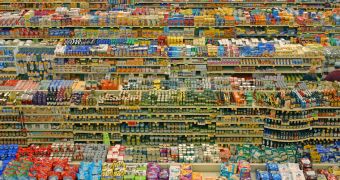A team of investigators recently conducted a series of investigations into the reason why we choose the objects we do in any given situation.
One of the main conclusions the group arrived at was that we tend to make choices – such as for instance which object or product to pick up off a buffet table – based on which of the things we see captures and keeps our eyes focused on it.
What the researchers wanted to learn was why sight plays such an important role, as well as the traits that made an object desirable above others.
“We're interested in how the brain makes simple choices, like which item to pick from a buffet table,” says Antonio Rangel, who is a professor of economics and neuroscience at the California Institute of Technology (Caltech), in Pasadena.
“Why is it that when we look at the buffet table, our gaze shifts back and forth between the items in order to make a choice? What is the role of visual attention in all this” the expert asks.
In order to determine what exactly influences this sort of choices, the expert and his colleagues developed a mathematical model.
The calculations were created so they could account for the impact that so called “visual fixation” had on people's decision when faced with even the simplest of choices.
Rangel worked together with Caltech postdoctoral scholar Ian Krajbich, and also with colleague Carrie Armel, who is based at the Stanford University.
The team describes visual fixation in the simplest of terms, as the amount of time people spend looking at one particular object, or in a single direction.
Details of their findings are published in the latest online issue of the esteemed scientific journal Nature Neuroscience.
“The model makes very specific predictions about how the pattern of fixation is related to our choices,” Rangel argues.
“For example, after controlling for other variables, items that are looked at more should be chosen more often,” he says. To test the predictions, he and his team set up an eye-tracking experiment.
In nearly 75 percent of all cases, people tended to choose the object that captured their attention longest, as in those with the highest degree of visual fixation.
The discovery also has some practical implications, for supermarket and food store managers.
“[T]he model explains how cultural norms (for example, reading left to right) can interact with comparator processes to produce cultural choice biases,” the Caltech group writes.
“These biases help to explain, for example, why shelf and computer screen space on the top-left is more valuable than other positions,” the experts conclude.

 14 DAY TRIAL //
14 DAY TRIAL //